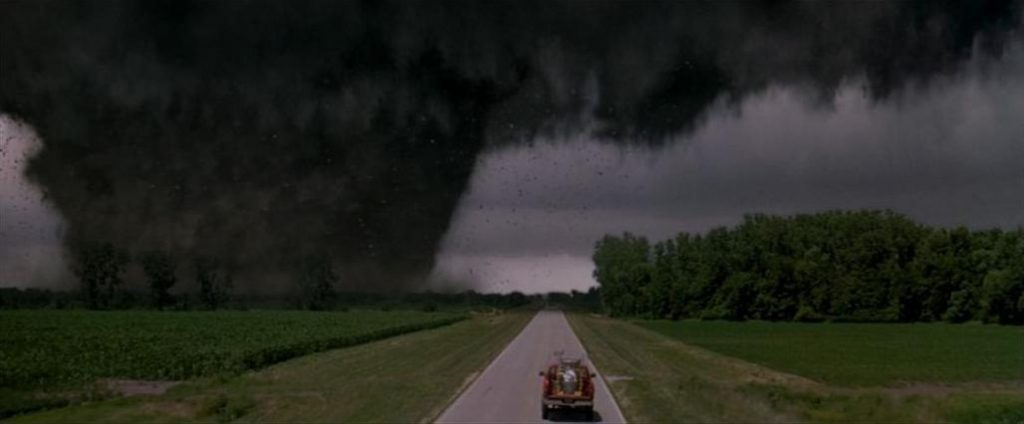Twister’s Tornadoes: A Triumph of Special Effects and Practical Magic
Twister’s depiction of tornadoes was groundbreaking for its time, setting a new standard for realism in disaster films. The film’s success in portraying these destructive forces was a result of a combination of innovative special effects techniques and clever practical methods.

CGI and Digital Effects:
- Early Use of CGI: Twister was one of the early films to extensively utilize computer-generated imagery (CGI) to create realistic tornadoes. Industrial Light & Magic (ILM), renowned for their special effects work, used CGI to generate the tornadoes’ funnel clouds, debris fields, and swirling winds. The CGI tornadoes were carefully modeled based on real-world observations and meteorological data, ensuring a level of accuracy that was previously unseen in films.
- Particle Systems: ILM employed advanced particle systems to simulate the debris fields within the tornadoes. Thousands of individual particles, representing various types of debris, were animated and rendered to create the chaotic and swirling appearance of a tornado’s destructive path.
Practical Effects:
- Debris cannons and wind machines: To complement the CGI effects, the filmmakers utilized a variety of practical effects to create a sense of realism and immersion. Debris cannons were used to launch objects into the air, simulating the flying debris often associated with tornadoes. Powerful wind machines generated strong gusts, adding to the chaotic atmosphere and making the actors’ performances more believable.
- Full-Scale Sets: The production team built full-scale sets of houses, barns, and other structures, which were then subjected to the forces of wind machines and debris cannons to create realistic destruction sequences. These practical effects provided a tangible sense of the tornadoes’ destructive power and added depth to the film’s visual effects.
Realism and Accuracy:
- Collaboration with Meteorologists: The filmmakers consulted with meteorologists and storm chasers to ensure a level of accuracy in portraying tornadoes and the experience of chasing them. This collaboration helped to inform the film’s visual effects and the depiction of storm chasing procedures and equipment.
- Accurate Depiction of Tornado Behavior: Twister accurately captures several aspects of tornado behavior, including their unpredictable movements, the formation of multiple vortices, and the destructive power of their winds. The film also highlights the dangers associated with tornadoes and the importance of seeking shelter when a tornado warning is issued.
Tornadoes of Twister:

- The Finger of God: The first major tornado encounter occurs when the team chases a large twister nicknamed “The Finger of God.” This scene showcases the tornado’s immense size and its ability to level structures in its path. The team deploys their research equipment, Dorothy, but it is destroyed before it can collect any data.
- The Drive-In Tornado: In a visually striking scene, a tornado tears through a drive-in movie theater, tossing cars and debris through the air. The scene highlights the chaotic and unpredictable nature of tornadoes, as well as the danger they pose to anyone caught in their path.
- The Greenage Tornado: The team encounters a massive wedge tornado near the town of Greenage. This scene is particularly memorable for its depiction of the tornado’s multiple vortices, showcasing the complex structure of these storms. The team successfully deploys Dorothy within the tornado, but it is ripped apart by the extreme winds.
- The Final Chase: The climax of the film involves a chase with a violent F5 tornado. This scene features some of the most intense and destructive tornado footage in the movie, with houses being completely obliterated and debris swirling through the air. The team finally succeeds in deploying Dorothy within the tornado, collecting valuable data before being caught in the storm’s path.
